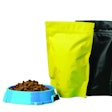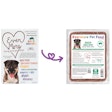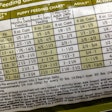For years, meeting consumers’ demands for greater transparency has challenged pet food manufacturers to market their products as “clean.” Often, clean labeling attempted to meet that challenge by focusing on what a product doesn’t contain, such as no artificial colors or no preservatives. Now, some wonder if it’s even possible to define a what a clean label is.
“Just as the term ‘natural’ remains undefined in the human food industry, ‘clean label’ is also open to interpretation,” said Melissa Brookshire, DVM in a recent Petfood Industry blog. “Without a clear definition or any regulatory guidelines, the door for class-action litigation is open, so proceeding with caution is advisable.”
Owners want to know what is in their pets’ foods, and that drives the demand for clean labels. However, people often they don’t understand what the claims on labels mean or know what their pets’ nutrition needs really are. Smart Label technology makes it easier for consumers to research what’s on their pets’ plates.
When they research pet food ingredients, a growing number of consumers don’t want to find genetically modified organisms, or GMOs. Some are fighting the call to label products that contain GMOs. On the other hand, some human food producers choose to label their products as containing GMOs, even if the law doesn’t force them too.
Clean labels provide transparency for pet owners
As consumers have made it clear that they trust what they understand and perceive to be fresh, real ingredients, and as they demand the right to know what is in the foods they eat, should it come as a surprise that those same consumers are now insisting on the same right for the foods they feed their pets?


















